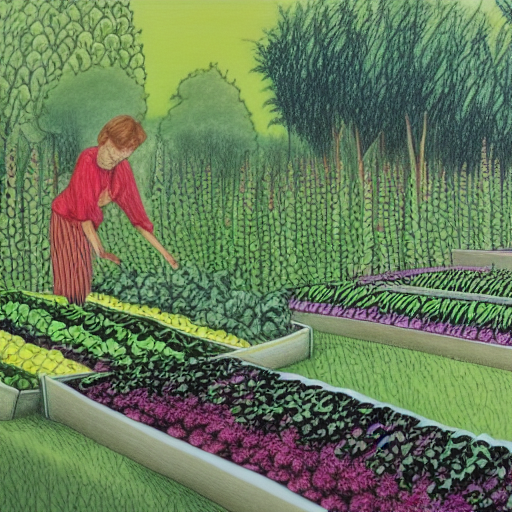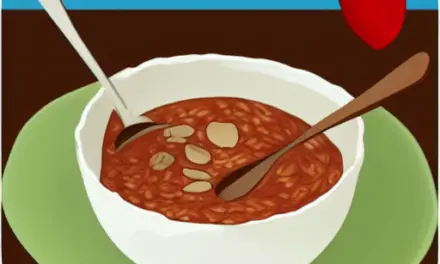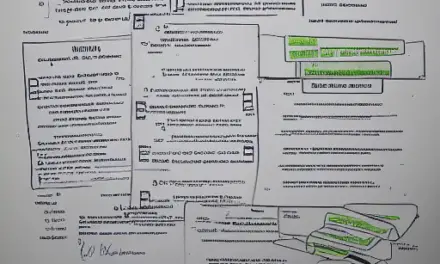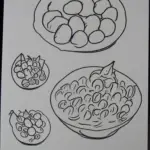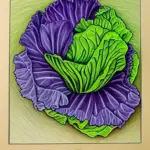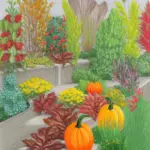If you are a first-time gardener and want to grow vegetables, the First-Time Gardener book is an excellent resource. This book explains the importance of soil texture and planting times, as well as how to water your plants. After reading the book, you’ll be well on your way to growing delicious, healthy vegetables.
Planting chart
The first step to starting a vegetable garden is to plan what crops you want to grow. You can do this by making a planting chart or sketching out the layout of your beds. You will also be able to plot out when to plant each crop. Vegetables require a yearly rotation, so you need to plan your garden accordingly.
To create a planting chart for your garden, you will first need to figure out how much space you want to use for planting. Creating a planting chart will help you plan the layout of your garden and ensure that you have plenty of space for paths. Once you have a rough plan of your garden, you can make it more detailed by marking the locations of tall plants on the north side. Tall plants will help shade short plants in the sun.
Next, you should write down when you intend to plant each of your seeds. The best time to plant a seed is before the last frost date. You should also check the Old Farmer’s Almanac for the average frost date for your area. You can also write down the ideal planting day for each of your seeds and organize them in a card file for future reference.
Planting dates vary depending on the hardiness zone, the last frost date, and the plant’s maturity. It is a good idea to determine your first frost date and work backwards from there. This will help you determine the best time to plant your garden. If you are planting vegetables, check their maturity times to ensure you don’t miss the frost date. This can help you avoid planting vegetables in the middle of the winter.
Soil texture
Soil texture refers to the physical properties of a soil and determines a lot of your growing decisions. You need to know the amount of silt, clay, and sand in your soil in order to grow healthy vegetables and fruits. The ideal soil texture contains equal proportions of all three minerals. It is also rich in organic matter and humus. A good garden soil crumbles easily and does not form a hard ball when squeezed.
The soil texture of your garden determines how fertile it is. By adding organic matter, you can improve the texture of your soil and increase its fertility. Sandy soils, on the other hand, are characterized by large particles and water quickly runs through the gaps. However, adding organic matter will fill in these gaps and retain moisture.
Before planting, you should test your soil to determine its nutrient content and pH levels. This will allow you to determine the proper amendments for your crops. This step is often skipped by new gardeners, but it is crucial for growing vegetables. Soil testing will give you important information about the conditions of your soil and how to make the best use of them.
The ideal soil texture for growing vegetables is loam, which is a mix of clay, sand, and silt. It contains active organisms, is nutrient-rich, and is pH-balanced. However, most garden soils are not loams. It can be easily amended with organic materials.
The next step in soil texture analysis is determining how much clay is in your soil. Clay particles are dense, which makes the soil heavy. Many home gardeners complain about clay in their soils, but it is an important element in nutrient retention. Clay particles have a negative charge and bind to positively-charged nutrient molecules, which release them through the cation exchange process.
Among the three main soil types, silt is the easiest to work with. It has the same nutrient content as clay but has a finer texture. The particles in this type of soil are much smaller than those in sandy soil. Silty soil also holds more moisture than other soils. If you are growing vegetables in sandy soil, you can make the soil more sticky by adding organic matter. A few fungi and bacteria will help in the process.
Planting times
Planting times vary by region, depending on the climate, frost dates, and plant maturity. The goal is to plant crops that are ready for harvest before the first frost. For vegetables, check the maturity times before planting. Some vegetables are ready in late winter or early spring. Some varieties are ready in the spring, while others are better for planting in the fall.
To help you plan your planting schedule, you can consult a planting calendar to learn about the ideal times to plant. These calendars calculate the optimal planting times based on the last frost date in your region and the first frost date in your hardiness zone. The Gilmour Planting Calendar is a great resource for calculating the best time to plant a garden. Using a planting calendar is a great way to make sure your plants are in the proper environment to thrive.
In order to get the most out of your garden, plan to plant vegetables and herbs at the proper time of year. In early February, you can plant vegetables such as lettuce, peppers, and tomatoes. In mid-February, you can plant hardy plants like potatoes, garden peas, and carrots. In mid-March, you can plant warm-season vegetables like rutabaga and green beans.
Knowing the ideal time to plant your vegetables depends on your climate. For example, you need to know when to plant vegetables in your zone to avoid a late frost. The USDA Plant Hardiness Zone Map divides North America into 13 zones. The temperature difference between zones is ten degrees.
Before planting, sketch out your garden plan so that you can maximize the available space and plan your planting schedule for the coming season. Vegetable garden maps can help you maximize the space in your garden. It will also help you identify where to plant your crops. In addition, they will give you the opportunity to make notes about your successes and failures. In addition, the maps will be useful year after year.
Watering
Watering your garden is crucial to growing a successful crop. Most plants are made up of about 90% water, and it is essential for cell structure, stability, and growth. Without water, plants will suffer from stunted growth or wilting. On the other hand, too much water can cause root rot, nutrient leaching, and other problems. Aim to water your vegetables about an inch a week, but only if necessary.
The first step is to prepare your garden by adding two to four inches of compost to your soil. You can sift the compost into the top foot of soil or mix it with a garden fork. As the soil breaks down, you can continue adding compost to your garden.
Vegetable plants need water in hot weather. This is because hot weather puts tremendous stress on them and causes them to dehydrate. Hence, it is important to water your vegetables during the morning hours, when the temperature is cooler. This also means that water does not evaporate as quickly. In addition, afternoon watering does not make a good use of the local water supply. If you do decide to water your vegetables in the afternoon, be sure to check your plants every day to make sure they are hydrated.
Watering your vegetables is an important step in growing your own vegetables. To ensure that you give your vegetables enough water, you should water them in the morning and at night. This will ensure maximum plant growth and help your vegetables thrive. Moreover, the watering of your plants will be easier if you follow a schedule.
In addition to the watering method, the quality of the soil in your garden is also important. If your soil is sandy, the plants may not grow properly and you might end up waterlogging them. Likewise, if you have a clay soil, your crops may wilt and die. You can improve the soil by adding organic matter and mulching.
To avoid excessive watering, you should measure the amount of rainfall. A rain gauge will help you monitor rainfall. It should collect about an inch of rain water. If it does not, it is time to water your vegetables. Moreover, you should add compost or mulch around your plants, as these substances will increase the soil’s ability to retain moisture.

